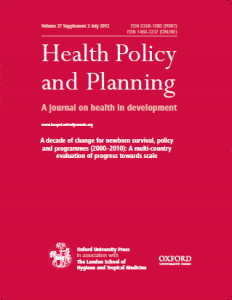
Context: Though promotion of institutional delivery is used as a strategy to reduce maternal and neonatal mortality, about half of the deliveries in India are conducted at home without any medical care. Among women who deliver at home, one in four cites cost as barrier to facility-based care. The relative share of deliveries in private health centres has increased over time and the associated costs are often catastrophic for poor households. Though research has identified socio-economic, demographic and geographic barriers to the utilization of maternal care, little is known on the cost differentials in delivery care in India. Objective: The objective of this paper is to understand the regional pattern and socio-economic differentials in out-of-pocket (OOP) expenditure on institutional delivery by source of provider in India. Methods: The study utilizes unit data from the District Level Household and Facility Survey (DLHS-3), conducted in India during 2007–08. Descriptive statistics, principal component analyses and a two-part model are used in the analyses. Findings: During 2004–08, the mean OOP expenditure for a delivery in a public health centre in India was US$39 compared with US$139 in a private health centre. The predicted expenditure for a caesarean delivery was six times higher than for a normal delivery. With an increase in the economic status and educational attainment of mothers, the propensity and rate of OOP expenditure increases, linking higher OOP expenditure to quality of care. The OOP expenditure in public health centres, adjusting for inflation, has declined over time, possibly due to increased spending under the National Rural Health Mission. Based on these findings, we recommend that facilities in public health centres of poorly performing states are improved and that public–private partnership models are developed to reduce the economic burden for households of maternal care in India.